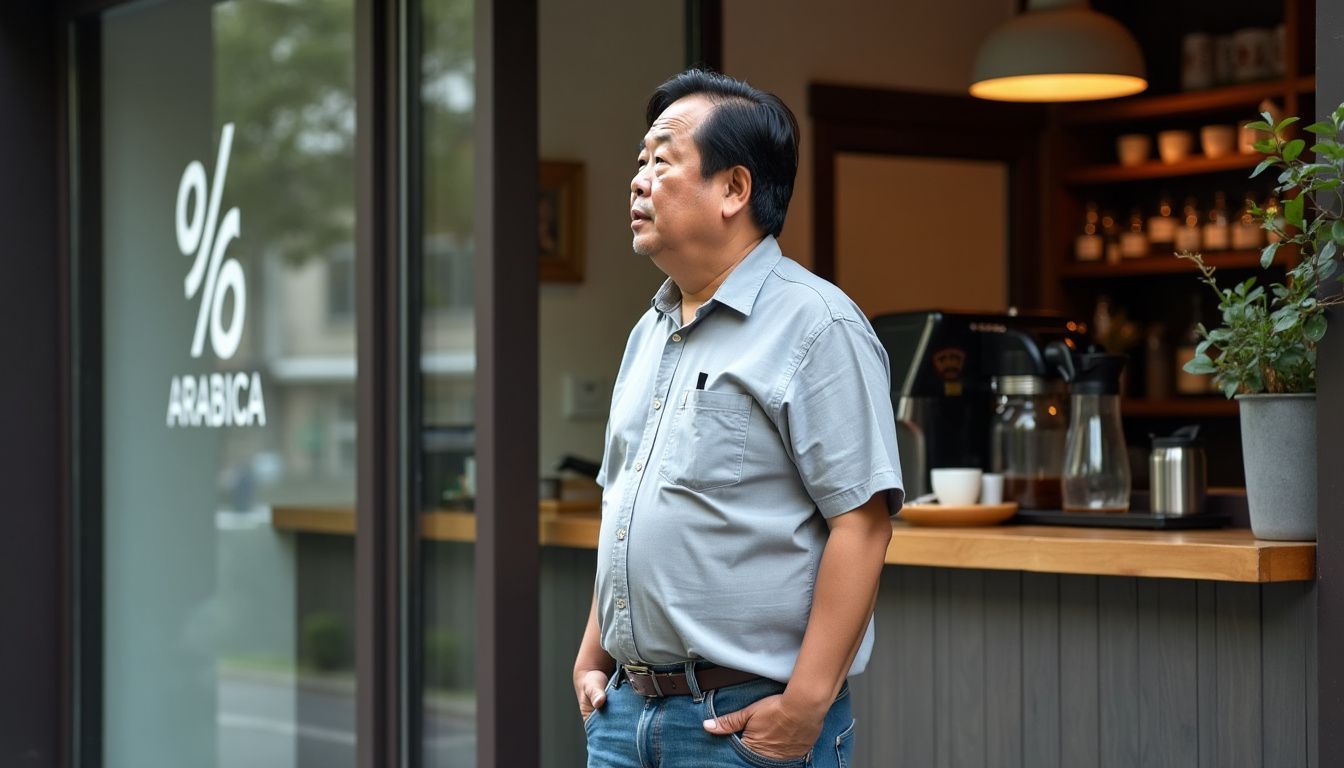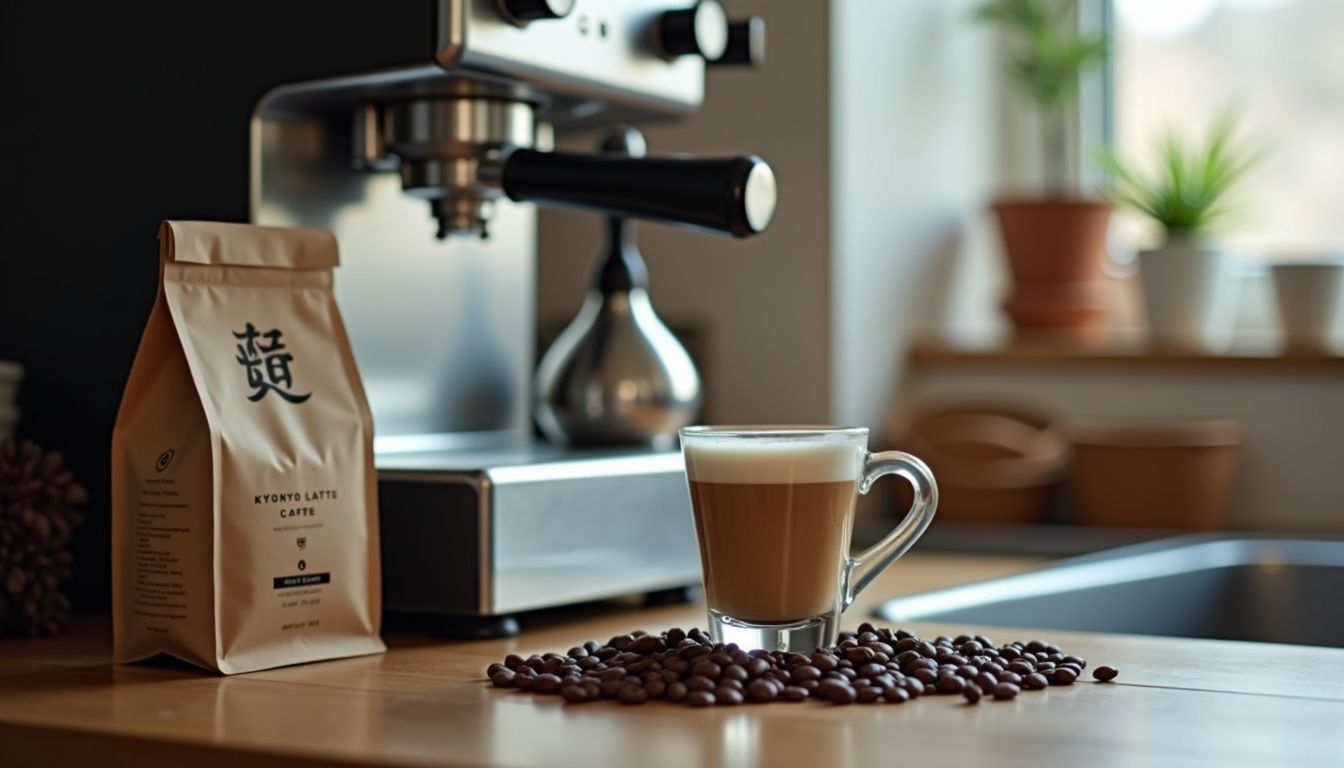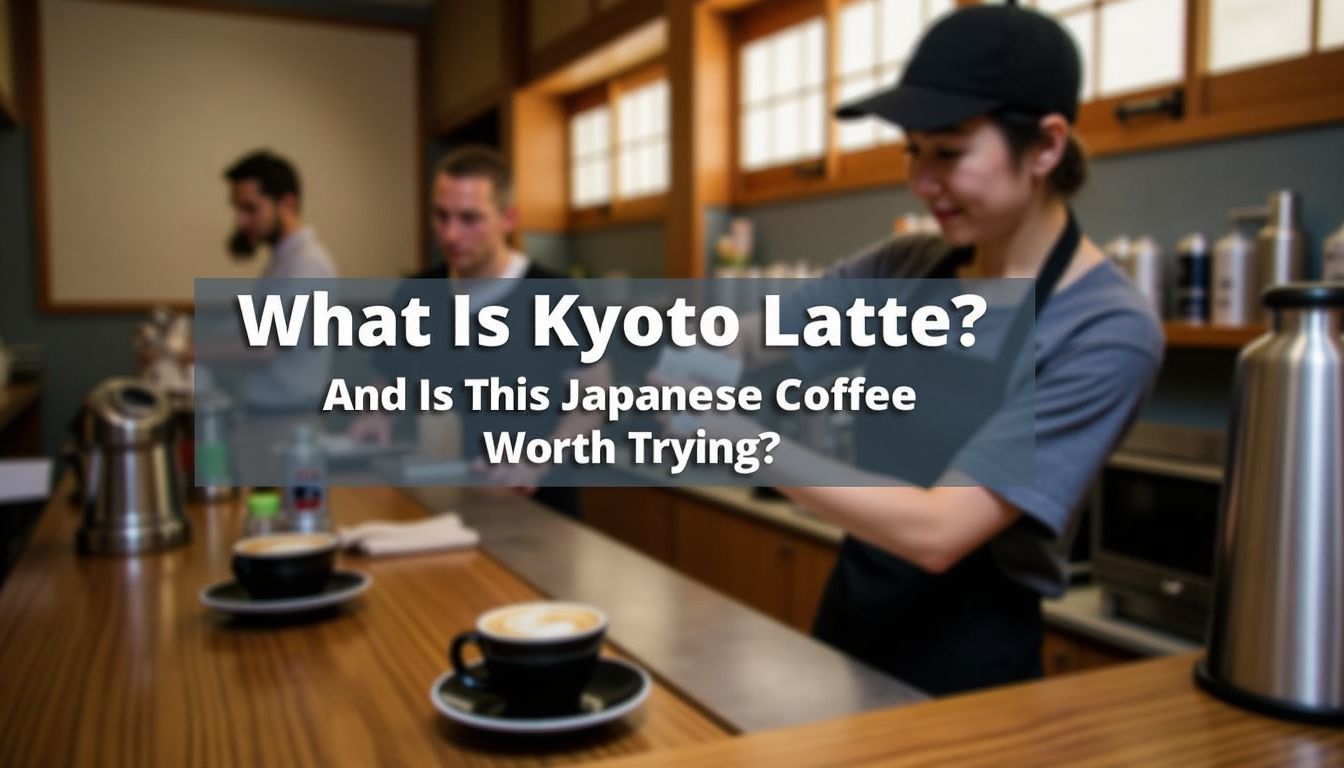What Is A Kyoto Latte? And Is This Japanese Coffee Worth Trying?
Curious about the Kyoto Latte on your favourite coffee shop menu? Many are intrigued by this Japanese brew, wondering if it’s worth a try.
The Kyoto Latte originated at % Arabica’s flagship store in Kyoto’s Higashiyama district, a hub of coffee culture in Japan. This latte blends rich espresso, silky steamed milk, and a touch of condensed milk. Together, they create a smooth balance that highlights deep chocolate undertones and subtle fruit notes, making this drink both unique and flavourful.
Continue reading to discover how this special latte reflects Kyoto’s coffee heritage, how to make it at home, and why it captivates those passionate about distinctive coffee flavours.
Origin at % Arabica Kyoto
The Kyoto Latte is a unique coffee drink born at % Arabica in Kyoto, Japan. It blends espresso with steamed milk and a touch of sweetness, setting it apart from other lattes.
% Arabica’s flagship store opened in Kyoto’s Higashiyama district in 2014. This shop created the Kyoto Latte, a unique coffee blend that gained worldwide attention. Kenneth Shoji, the founder, began his coffee journey after the 2011 Fukushima earthquake.
He purchased a Hawaii coffee farm and traded green beans globally before launching % Arabica.
Shoji’s vision, “see the world through coffee”, propelled % Arabica’s expansion. He recruited world latte art champion Junichi Yamaguchi as head barista. This decision enhanced the brand’s reputation for quality espresso and latte art.
The Kyoto Latte quickly became a favourite for coffee enthusiasts visiting Japan.
Key ingredients and proportions
The Kyoto Latte blends three main parts. It mixes espresso, milk, and a touch of sweetness.
- Single shot of espresso: This forms the base of the drink. It’s strong and rich.
- Textured milk: This adds creaminess. The milk is steamed to create a smooth texture.
- Condensed milk: A small amount adds sweetness. It’s about one tablespoon or less.
- Milk-to-espresso ratio: The drink uses more milk than espresso. This balance creates a mild taste.
- Condensed milk amount: The Kyoto Latte uses less condensed milk than other sweet lattes. This keeps the drink from being too sugary.
How it differs from other lattes, like the Spanish Latte
Kyoto Latte stands out from other coffee drinks with its unique blend and preparation. Here’s how it compares to the Spanish Latte:
| Feature | Kyoto Latte | Spanish Latte |
|---|---|---|
| Ingredients | Espresso, steamed milk, small amount of condensed milk | Espresso, steamed milk, larger amount of condensed milk |
| Ratio | Varies, less condensed milk | 1:1:1 (espresso:milk:condensed milk) |
| Sweetness | Subtle | Rich and pronounced |
| Flavour Notes | Balanced coffee with hint of chocolate | Strong chocolate and caramel notes |
| Availability | Exclusive to % Arabica cafes | Widely available globally |
You’ll notice Kyoto Latte offers a more balanced coffee taste. It uses less condensed milk than the Spanish Latte. This results in a subtler sweetness that doesn’t overpower the coffee flavour. Spanish Latte, in contrast, has a richer, sweeter profile due to its higher condensed milk content.
The Story of % Arabica

Kenneth Shoji founded % Arabica in Kyoto, Japan. His love for coffee and design led to a unique brand that now has shops worldwide.
Kenneth Shoji’s vision and background
Kenneth Shoji, % Arabica’s founder, had a clear aim: to experience the world through coffee. He purchased a coffee farm in Hawaii and traded green coffee beans globally. This action demonstrated his profound passion for coffee and his wish to share it internationally.
Following the 2011 Fukushima earthquake, Shoji opened his first coffee shop in Hong Kong. He then brought on world latte art champion Junichi Yamaguchi as head barista. This decision showed Shoji’s dedication to excellence and artistry in every cup.
Global expansion and popularity
% Arabica has grown fast since its start. It now has 162 stores worldwide. Most shops are in the Middle East and East Asia. The brand is less common in North America and Europe. You’ll find only 2 stores in New York, 1 in Los Angeles, 2 in Toronto, and 4 in London.
The company plans to open more stores soon. Coffee lovers enjoy % Arabica’s unique taste and style. Its success shows in how quickly it has spread to new places. The brand’s mix of good coffee and cool design appeals to many people around the world.
How to Make a Kyoto Latte at Home

You can make a Kyoto Latte at home with the right tools and know-how. You’ll need an espresso machine, milk frother, and quality coffee beans to start.
Equipment and ingredients you need
To prepare a Kyoto Latte at home, you’ll need these tools and ingredients:
- Espresso machine with milk steaming wand: This is essential for brewing the espresso and frothing milk.
- Coffee grinder: Use fresh ground coffee for the best flavour.
- Espresso beans: Select high-quality beans for a rich taste.
- Milk: Whole milk is ideal, but plant-based alternatives can be used.
- Condensed milk: Add one tablespoon per serving for sweetness.
- Milk jug: For steaming and pouring milk.
- Espresso cups: To measure and serve your coffee.
- Thermometer: To monitor milk temperature while steaming.
- Spoon: For mixing in the condensed milk.
- Scale: To measure coffee beans for a perfect shot.
Tips for perfecting the flavour and sweetness
Kyoto Lattes need care to get right. Here are tips to perfect your brew:
- Use fresh, high-quality coffee beans. Grind them just before brewing for the best flavour.
- Control water temperature. Aim for 93°C to 96°C for proper extraction.
- Adjust milk ratios. Begin with 1:3 coffee to milk, then modify to taste.
- Add condensed milk sparingly. Use no more than one tablespoon to keep sweetness subtle.
- Steam milk properly. Create silky microfoam for a smooth texture.
- Try different milk types. Oat or almond milk can offer varied flavour profiles.
- Be mindful of sweetness. Natural milk sugars affect the overall taste.
- For home brewing, a moka pot or AeroPress can work well. These tools can produce espresso-like results.
- Cool your glass before serving. This helps maintain your latte’s temperature for longer.
- Mix gently before drinking. This combines the layers for a balanced sip.
Benefits of Drinking a Kyoto Latte

The Kyoto Latte offers a unique taste that blends sweet and bitter notes. Its lower acidity makes it easier on your stomach, perfect for those who love coffee but struggle with heartburn.
Unique taste profile and health aspects
Kyoto Lattes offer a unique taste profile. They blend chocolate and fruit notes from special coffee beans. The drink uses less condensed milk than other lattes. This creates a subtle sweetness that doesn’t overpower the coffee flavour.
Health wise, Kyoto Lattes can be a good choice. They contain less sugar than many sweet coffee drinks. You can also ask for plant based alternative milk options like oat or soy milk. These choices make the latte suitable for different dietary needs.
Why coffee lovers should try it
Coffee enthusiasts may enjoy the Kyoto Latte for its distinctive taste. This beverage combines Italian and Spanish latte styles, resulting in a subtle sweetness. You’ll experience a new flavour that differs from your usual coffee.
The Kyoto Latte presents a different approach to espresso drinks.
Sampling this latte allows you to experience global coffee trends. You can savour a hint of Japan’s coffee culture without leaving home. It’s an opportunity to broaden your coffee knowledge and palate.
The Kyoto Latte’s balance of flavours makes it appealing for any coffee fan.
Conclusion
The Kyoto Latte offers a unique twist on classic espresso drinks. Its blend of espresso, steamed milk, and condensed milk creates a rich, balanced flavour. You can easily make this treat at home with basic tools and ingredients.
Coffee fans should try this drink for its special taste and subtle sweetness. Visit % Arabica in Kyoto or their global shops to taste the original Kyoto Latte.
Frequently Asked Questions
What Is The Kyoto Latte, And How Does It Differ From Traditional Lattes?
The Kyoto Latte is a specialty coffee drink created at % Arabica in Kyoto, Japan. Unlike traditional lattes, it includes a small amount of condensed milk, which adds a subtle sweetness. The balance of espresso, steamed milk, and condensed milk highlights rich chocolate and fruit notes, making it distinct from other lattes.
How Does The Condensed Milk In The Kyoto Latte Affect Its Flavour Profile?
The condensed milk in the Kyoto Latte adds a hint of sweetness without overpowering the natural flavours of the espresso. It enhances the drink’s smooth texture and brings out subtle chocolate undertones, creating a balanced and nuanced flavour.
Why Is The Kyoto Latte Considered A Significant Part Of Japanese Coffee Culture?
The Kyoto Latte represents the intersection of modern specialty coffee trends with traditional Japanese craftsmanship. Originating from % Arabica in Kyoto, a city known for its rich culture, the latte has become a symbol of the innovative yet refined approach to coffee that is increasingly popular in Japan.
Can You Replicate The Kyoto Latte At Home Without Professional Equipment?
Yes, you can replicate the Kyoto Latte at home using a simple espresso machine, a milk frother, and condensed milk. While professional equipment can provide more precision, home brewing with basic tools and quality ingredients can still produce a satisfying Kyoto Latte.
How Does The Kyoto Latte Compare To Other Popular Coffee Drinks Like The Spanish Latte?
The Kyoto Latte is less sweet than the Spanish Latte, using a smaller amount of condensed milk. While both drinks feature espresso and steamed milk, the Kyoto Latte offers a more balanced coffee flavour with subtle chocolate notes, whereas the Spanish Latte has a richer, sweeter profile because of its higher condensed milk content.
Is The Kyoto Latte Overly Sweet Because Of The Condensed Milk?
No, the Kyoto Latte is not overly sweet. The amount of condensed milk used is minimal, providing just enough sweetness to complement the espresso without overwhelming the coffee’s natural flavours.
Is The Kyoto Latte Available Outside Of % Arabica Cafes?
The Kyoto Latte is primarily available at % Arabica cafes, though some specialty coffee shops may offer similar versions. However, its unique recipe and preparation are closely tied to % Arabica, making the original version harder to find outside these locations.
